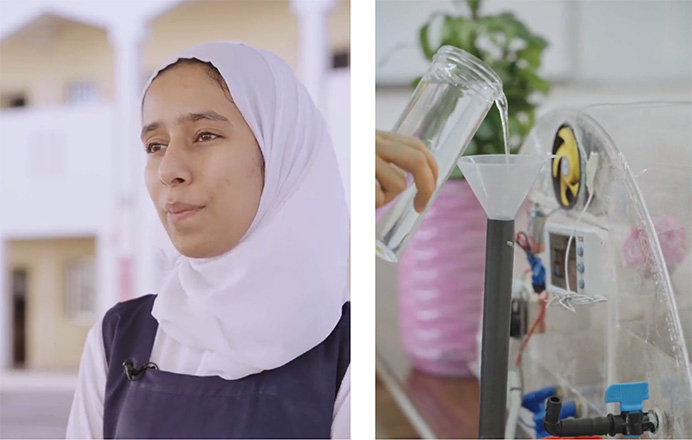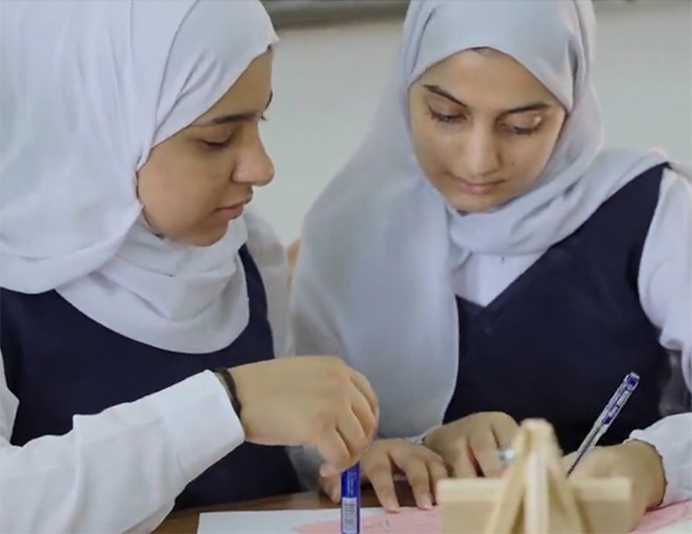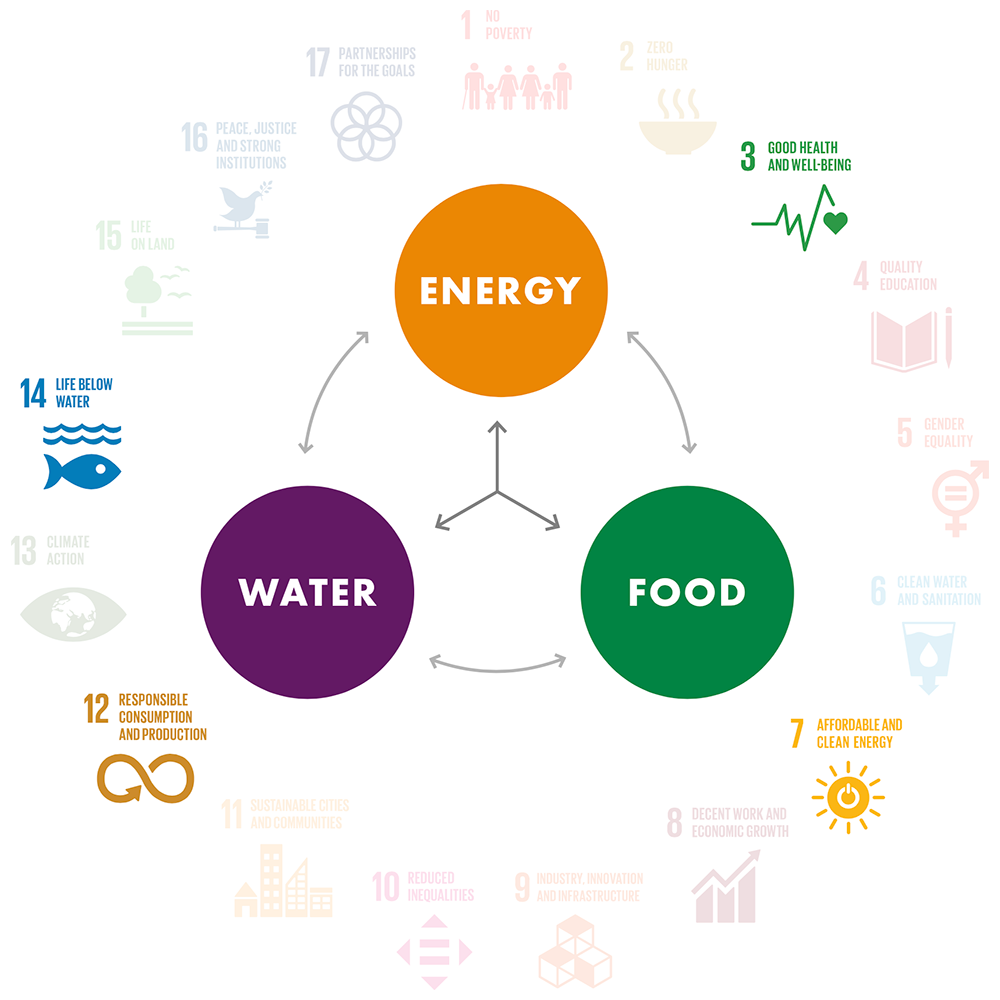Team Oman Green Seas, a group of Shell NXplorers students from Oman, wanted to explore how to tackle a range of issues that make leafy vegetable farming challenging. These issues include lack of rain, alkaline and increasingly saline soil, rising demand for water in the region and the high cost of desalinisation.
The team researched and combined a range of technologies to design a scale model Marine Reserve – a floating farm unit. The Reserve uses renewable energy sources to desalinise seawater, power an automated system for drip irrigation as well as manage humidity and temperature.
The project’s aim was to develop a novel farming method that not only contributes to the availability of leafy vegetable crops in local and national markets in Oman, but is also sustainable. This makes the best use of local renewable energy sources.
Research Sustainable and Automated Farming
Using the NXplorers toolkit, the team researched a wide range of technologies and approaches they might use to create an ideal growing environment in their Marine Reserve system.
The system is designed to float on the sea and be powered by wind, wave and solar power. To do this, the team combined a small wind turbine, a hydro turbine that captures and converts wave energy, and solar cells. Together, these power a simple heating system that works alongside the sun’s direct energy to evaporate seawater and distil, condense, collect and store fresh water for the drip irrigation system. Batteries store excess renewable energy to power the drip irrigation pump, control system and growing lights overnight.
Recombine Technologies to Increase Crop Production
The team’s creative solution is to combine these technologies in a single system. Combined renewable energy sources power the Marine Reserve’s systems, which are connected to an automated computer controller using data sharing technologies. The floating automated Marine Reserve systems can collect more than enough water while in their optimised growing conditions.
To further improve crop yields, Team Oman Green Seas also explored what organic pesticides and fertilisers will create the best quality crops while addressing common challenges in Oman. The team identified three organic products that effectively treat nematode disease in garlic, tomato blight and witches’ broom disease in limes.
Rethink How and Where Leafy Vegetable Crops are Grown
NXplorers helped the students to work effectively as a team to solve a wide range of issues, from directing wave energy to controlling temperature and humidity and releasing waste salty water after distillation. The NXplorers toolkit allowed them to not only rethink how these crops are grown, but also where this happens.
Rather than trying to deal with the many challenges of growing on land, Team Oman Green Seas put their crops where water and energy are readily available, and unfavourable conditions and pests are absent – floating on seawater.

Conclusion
Team Oman Green Seas worked as an effective creative team to overcome difficult technical challenges and achieve inspiring results that could transform how leafy crops are grown.
Their healthy seedling crops are proof their Marine Reserve concept works, and the team are hopeful that their idea might itself grow into a new form of farming to benefit people around the world.

Through the NXplorers programme, we managed to launch the project and establish its working mechanism. We then harnessed the energy and power of the sea along with the use of technology to achieve our project goals.
How This Project Contributes To The UN SDGs
3. Good health and well-being
Marine Reserve farming systems help everyone to include plenty of green.
7. Affordable and clean energy
The system uses renewable energy to power its systems and provide the energy for desalination.
12. Responsible consumption and production
Drip irrigation uses water more responsibly and sustainably.
Relocating crops to coastal areas avoids intensive use of energy and water on land.
14. Life below water
Marine Reserve farming systems make sustainable use of local marine habitats without reducing local marine resources.

Diagram of the United Nations’ Sustainable Development Goals numbered in a large circle, each with a smaller diagram below to represent the specific Development Goal. All of the Development Goals are faded, apart from four of them:
3. Good health and well-being
7. Affordable and clean energy
12. Responsible consumption and production
14. Life below water
Within the circle there are three circles in a triangle formation reading ‘Energy’, ‘Water’ and ‘Food’, with arrows to show how they are all interconnected.